I am new to asking questions on stack overflow, and even newer to MIPS.
I tried implement the following recursive solution to the 'hanoi towers' problem (taken from here) using MIPS.
I think my failure in doing so lies behind the fact that I don't understand when I should restore/save registers such as $ra, $sp - so I just assume I need to do so everywhere - any help would be greatly appreciated:
void towerOfHanoi(int n, char from_rod, char to_rod, char aux_rod)
{
if (n == 1)
{
printf("\n Move disk 1 from rod %c to rod %c", from_rod, to_rod);
return;
}
towerOfHanoi(n-1, from_rod, aux_rod, to_rod);
printf("\n Move disk %d from rod %c to rod %c", n, from_rod, to_rod);
towerOfHanoi(n-1, aux_rod, to_rod, from_rod);
}
int main()
{
int n = 4; // Number of disks
towerOfHanoi(n, 'A', 'C', 'B'); // A, B and C are names of rods
return 0;
}
And this is my attempt to 'translate' it into MIPS:
.globl main
main:
addi $sp, $sp, -4
sw $ra, 0($sp)
li $v0, 5 # system call code for read_int
syscall
move $a0, $v0 # a0 holds the number of disks
li $a1, 'A' # a1 holds from_rod
li $a2, 'C' # a2 holds to_rod
li $a3, 'B' # a3 holds aux_rod
jal hanoi
lw $ra, 0($sp)
addi $sp, $sp, 4
li $v0, 10
syscall
hanoi:
addi $sp, $sp, -4
sw $ra, 0($sp)
beq $a0, 1, base_case
addi $a0, $a0, -1 # number_of_disks -= 1
# swap between to_rod and aux_rod :
move $t0, $a2 # temp = to_rod
move $a2, $a3 # to_rod = aux_rod
move $a3, $t0 # aux_rod = temp
jal hanoi
jal print
# swap between from_rod and aux_rod :
move $t0, $a1 # temp = from_rod
move $a1, $a3 # from_rod = aux_rod
move $a3, $t0 # aux_rod = temp
jal hanoi
lw $ra, 0($sp)
addi $sp, $sp, 4
jr $ra
base_case:
addi $sp, $sp, -4
sw $ra, 0($sp)
jal print
lw $ra, 0($sp)
addi $sp, $sp, 4
jr $ra
print:
addi $sp, $sp, -4
sw $ra, 0($sp)
move $t0, $a0
li $v0, 11
move $a0, $a1
syscall # print from_rod
li $a0, '>'
syscall # print the char '>'
move $a0, $a2
syscall # print to_rod
li $a0, '\n'
syscall # pirnt new line
move $a0, $t0
lw $ra, 0($sp)
addi $sp, $sp, 4
jr $ra
